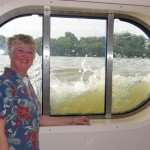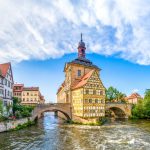From humble beginnings as a Viking fishing village in 1043, Copenhagen rose to become Denmark’s capital five centuries later. It is a city filled with 17th and 18th-century buildings, parks, gardens and canals. An eminently walkable city—many attractions are within walking distance—it celebrates both modernity and rich heritage. A popular port of call on Northern Europe itineraries, it is also an embarkation/disembarkation port on cruises to the Baltic Sea.
Here are eight Danish delights that my husband Humberto and I have enjoyed during several cruises to Scandinavia and Northern Europe. These highlights will enrich a call to the city.

The Little Mermaid
This bronze statue by Edvard Eriksen is inspired in the beloved fairy tale of the same name by Copenhagen’s favorite adopted son, Hans Christian Andersen. Not a colossal statue by any means, but rather she is petite at a little over four feet tall. It has been displayed by the waterside city’s Langelinje Promenade since its unveiling in 1913. Sitting on a rock by the sea, alone and somewhat forlorn, it has become an icon of Copenhagen, a witness to the fact that good things can come in small packages. The Little Mermaid is within walking distance of the Langelinje, Nordhavn and Freeport cruise terminals in Copenhagen.
Kronborg Castle
This is arguably the most famous of Danish castles as it is the castle in Shakespeare’s Hamlet. it is located on a promontory in Northern Zealand facing the sound between Elsinore and Helsingborg in Sweden. Built to protect Denmark from unwanted visitors, it was home to the Danish royal family until the 17th century. It has beautiful interiors in Baroque and Renaissance architectural styles.

Tivoli Gardens
Established in the 19th century, this attraction is geared to families and the young at heart. The gardens offer a whimsical afternoon of rides and games in the amusement park that was visited often by Hans Christian Andersen. It is said to have inspired one Walt Disney to create Disneyland in California. Tivoli has nostalgic rides—one has vehicles shaped like hot-air balloon gondolas—and cutting-edge rides including roller coasters like Vertigo that turns thrill-seekers upside down at 62 miles an hour. If your ship overnights in Copenhagen, it might be fun to plan an evening visit to Tivoli Gardens as the park is lit up with thousands of colored lights that give it the aspect of a fairy tale.
Christianborg Palace
On the isle of Slotsholmen, this building is home to the Danish Parliament, Supreme Court and Ministry of State. It is used by the royal family to receive ambassadors and other VIPs. A highlight is the Great Hall with 11 colossal tapestries that depict scenes from Denmark’s history.
Amalienborg Palace
Made up of four buildings, Amalienborg Palace is the home of the Danish royal family. Its museum presents the private interiors of recent Danish royalty and exhibits on the history of the monarchy. The Changing of the Guard ceremony takes place every day at noon.

Nyhavn
Picturesque Nyhavn is a colorful 17th-century waterfront, canal and entertainment district is filled with restaurants, cafes and jazz clubs. Hans Christian Anderson lived in this area and wrote here some of his most famous fairy tales including “The Princess and the Pea.”
Stroget
Copenhagen’s most famous pedestrian street is one of Europe’s longest at almost a mile in length. At the heart of the city, it is filled with shops and designer boutiques and lively outdoor entertainment including musicians, magicians and acrobats.

Rosenborg Castle
Rosenborg Castle is in the King’s Garden, in the heart of Copenhagen, and is the depository of the Danish Crown Jewels and Royal Regalia. It dates from the early 17th century and has as some of its main attractions the Knights Hall with the coronation thrones guarded by three life-size silver lions.



